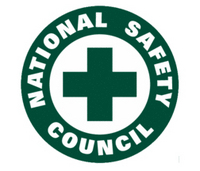Americans' Pessimistic View of Accident Prevention Poses Hurdle to Reducing Injuries, Survey Says
 |
Poll Shows Nearly 1 in 3 Believe Nothing Can Be Done
2 to 1 Rank Accidental Injury Over Crime as Greatest Risk to Well-Being
CHICAGO - October 15, 2007: Nearly one in every three Americans believes nothing can be done to prevent accidental injuries, posing a major obstacle to national efforts to reverse escalating injury trends in the United States, according to a national survey of American attitudes on safety issues released today by the National Safety Council at its annual safety and health meeting here.
This finding comes on the heels of an NSC injury report in June showing that accidental deaths and injuries are climbing and at current rates could hit an all-time high in the next few years if public action isn't taken to reverse the trend.
Despite this pessimistic view on prevention, 58 percent of Americans believe accidental injuries are a serious public health concern, and 46 percent ranked accidental injuries as the greatest risk to their health and well-being, as opposed to less than 25 percent who ranked violent crime as the greatest risk.
"We're encouraged that Americans recognize accidental injuries as a major concern in their everyday lives," said NSC President and CEO Alan C. McMillan. "However, this survey clearly shows that we have our work cut out for us in educating Americans about how to prevent injuries from ever occurring."
For example, NSC data shows that poisoning -- particularly from overdoses of prescription and illicit drugs -- is now the fastest-rising cause of accidental death, with major increases among working age adults.
Once a leading cause of death among children, today the death rate from poisoning for children under 6 years of age is just 0.4 per 100,000. Yet, survey results show that most people (81 percent) believe children are at greatest risk for poisoning, while less than 4 percent said adults. When asked to rank potential causes of poisoning, 53 percent said household chemicals were most commonly associated with fatal poisoning while 34 percent pointed to drugs and medicine.
"It's clear people don't understand what is really happening in their homes and communities, which detracts from efforts to reduce injuries including deaths from poisonings," said McMillan. "The fact is, we can control the risks of accidental deaths through education, and where we have buy-in from individuals, organizations, businesses and communities, the rate of accidental injuries decreases."
The survey also indicates that the nation is receptive to safety advocacy efforts. A majority of the respondents believe they can act to prevent accidents, and three-quarters (76 percent) say their companies are concerned about injury prevention at work. This focus on occupational safety is reflected in a 17 percent decline in the workplace accidental death rate since 1992.
Respondents also expressed confidence in their employers' ability to deal with emergency situations in the workplace. Sixty-one percent of respondents believe their employer is prepared to deal with emergency situations, compared with their family, at 57 percent, and their community, at 50 percent.
"These are positive developments that reinforce the Council's commitment to work with employers to safeguard employees and their families where they are at greatest risk -- in their homes and communities," McMillan said.
Asked what precautions they have taken in their homes to prepare for an emergency, 84 percent of respondents said they have one or more smoke detectors, 63 percent have one or more first aid kits, and 46 percent have looked for and corrected hazardous areas or situations around the house.
One disturbing trend is that only 25 percent have taken a first aid/CPR/AED class in the last two years despite that fact the heart disease is the leading cause of death in the nation and 75-80 percent of cardiac arrests occur in homes.
Automobile accidents continue to be the leading cause of accidental deaths, although rates have declined in recent years as the NSC and other organizations have promoted seat belts, safety features and safe driving practices. Respondents to the poll overwhelmingly (89 percent) recognized that talking on a cell phone while driving is a dangerous distraction and 42 percent said they never do it.
When asked which of the following areas poses the greatest risk to their overall health and wellbeing, respondents rated accidental injuries (46 percent) higher than violent crime (25 percent), epidemics (11 percent), natural disasters and a terrorist attack (both 9 percent).
"We know safety works," said McMillan, a former deputy assistant secretary of OSHA. "The greatest challenge we face is in reaching the public with information about their risks of unintentional injury and death and what they need to do to minimize those risks. We need to take the same energy and focus committed to workplace and transportation safety and apply it to where we now see the greatest need, and that is in our homes and communities."
The survey of 1,614 randomly selected adults was conducted by InfoSurv Market Research Aug. 7-14, 2007.
The National Safety Council (www.nsc.org) is a nonprofit, nongovernmental, public service organization. Members of the NSC include businesses, labor organizations, schools, public agencies, private groups and individuals. Founded in 1913 and chartered by the U.S. Congress in 1953, the National Safety Council is committed to preventing accidental injuries in the workplace, on roads and highways, and in homes and communities.


